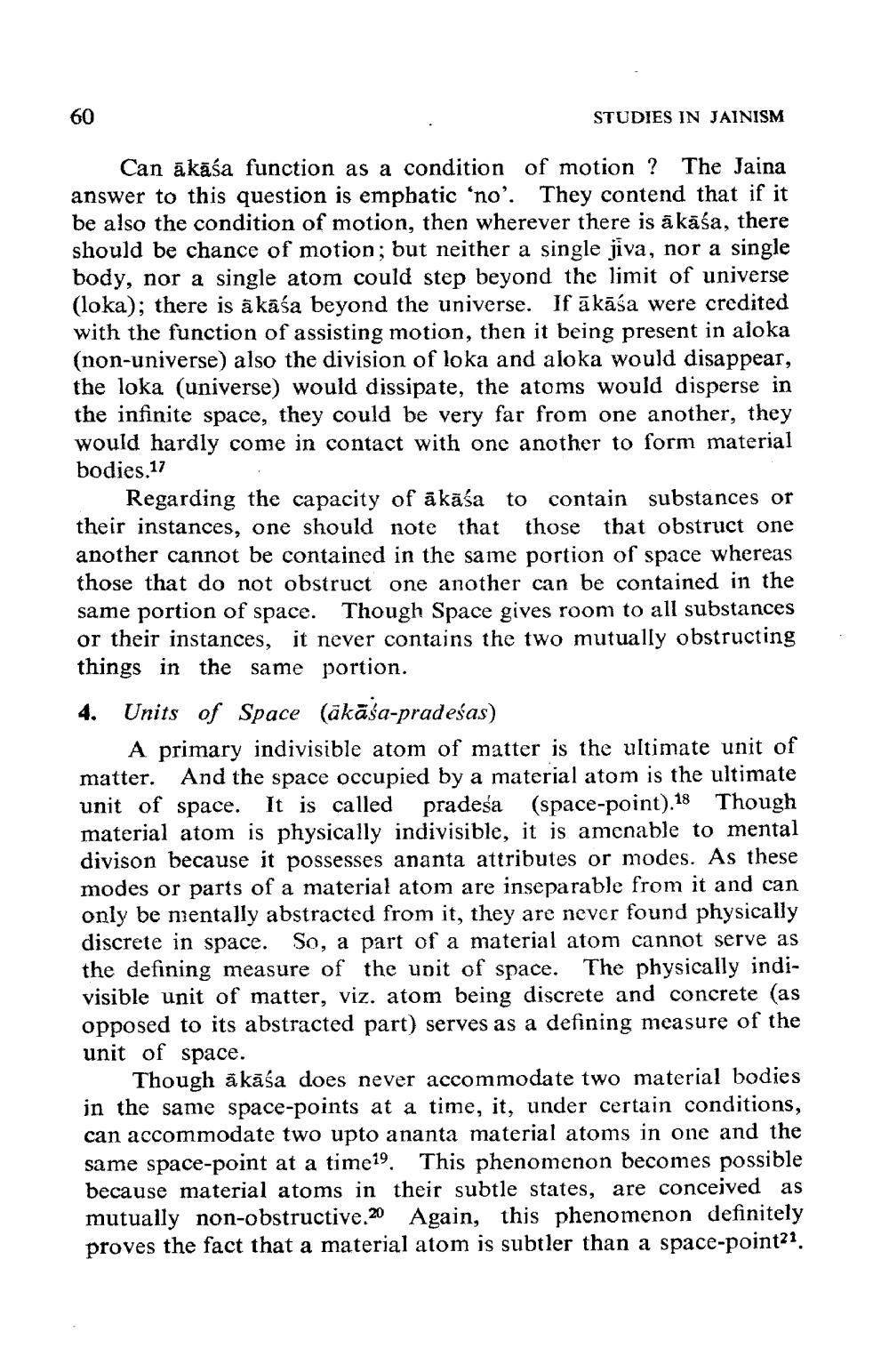________________
60
STUDIES IN JAINISM
Can ākāśa function as a condition of motion ? The Jaina answer to this question is emphatic 'no'. They contend that if it be also the condition of motion, then wherever there is ākāśa, there should be chance of motion; but neither a single jiva, nor a single body, nor a single atom could step beyond the limit of universe (loka); there is akaśa beyond the universe. If ākāśa were with the function of assisting motion, then it being present in aloka (non-universe) also the division of loka and aloka would disappear, the loka. (universe) would dissipate, the atoms would disperse in the infinite space, they could be very far from one another, they would hardly come in contact with one another to form material bodies.17
Regarding the capacity of ākāśa to contain substances or their instances, one should note that those that obstruct one another cannot be contained in the same portion of space whereas those that do not obstruct one another can be contained in the same portion of space. Though Space gives room to all substances or their instances, it never contains the two mutually obstructing things in the same portion. 4. Units of Space (ākāśa-pradeśas)
A primary indivisible atom of matter is the ultimate unit of matter. And the space occupied by a material atom is the ultimate unit of space. It is called pradesa (space-point).18 Though material atom is physically indivisible, it is amenable to mental divison because it possesses ananta attributes or modes. As these modes or parts of a material atom are inseparable from it and can only be nientally abstracted from it, they are never found physically discrete in space. So, a part of a material atom cannot serve as the defining measure of the unit of space. The physically indivisible unit of matter, viz. atom being discrete and concrete (as opposed to its abstracted part) serves as a defining measure of the unit of space.
Though ākāśa does never accommodate two material bodies in the same space-points at a time, it, under certain conditions, can accommodate two upto ananta material atoms in one and the same space-point at a time19. This phenomenon becomes possible because material atoms in their subtle states, are conceived as mutually non-obstructive.20 Again, this phenomenon definitely proves the fact that a material atom is subtler than a space-point21.




